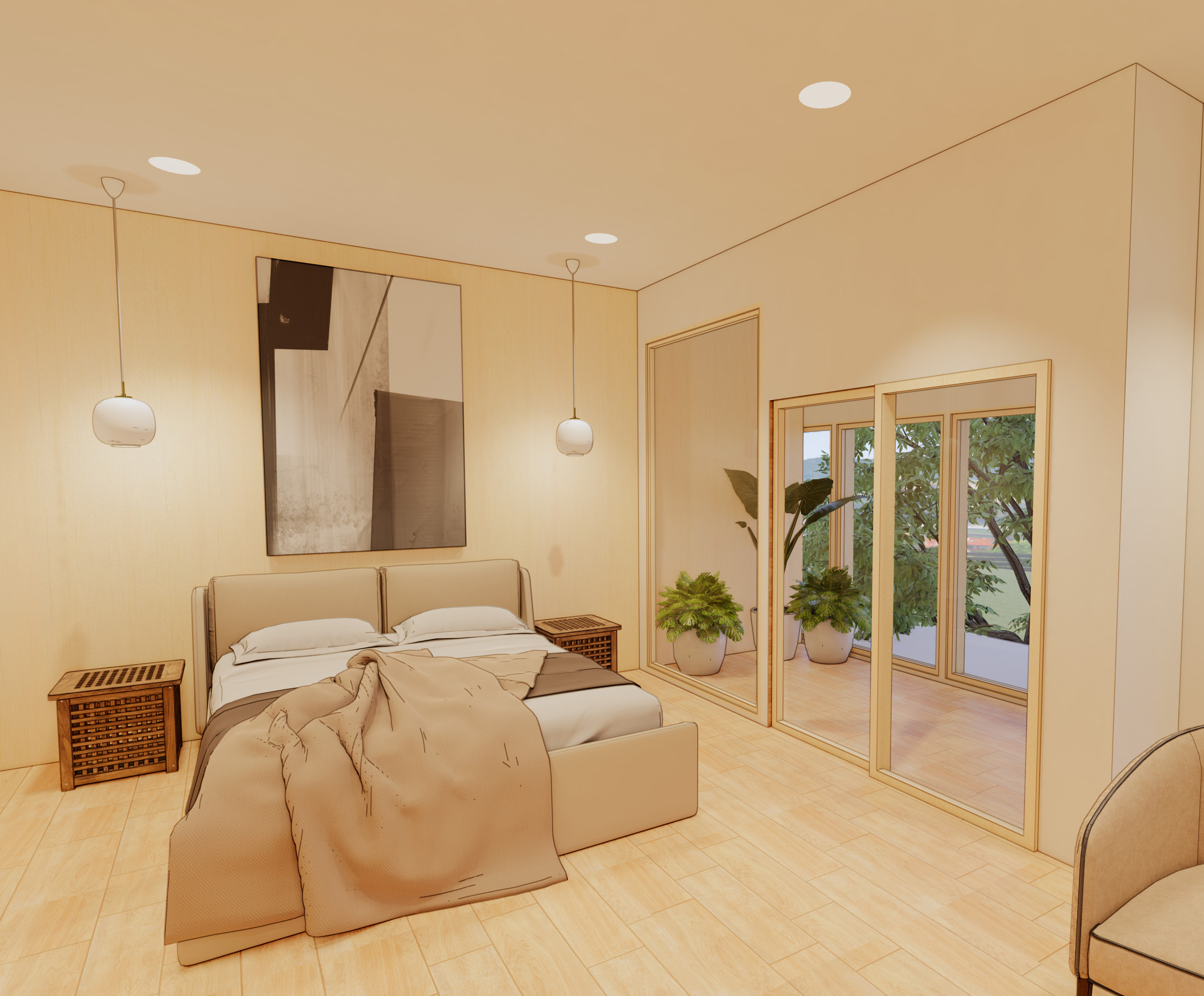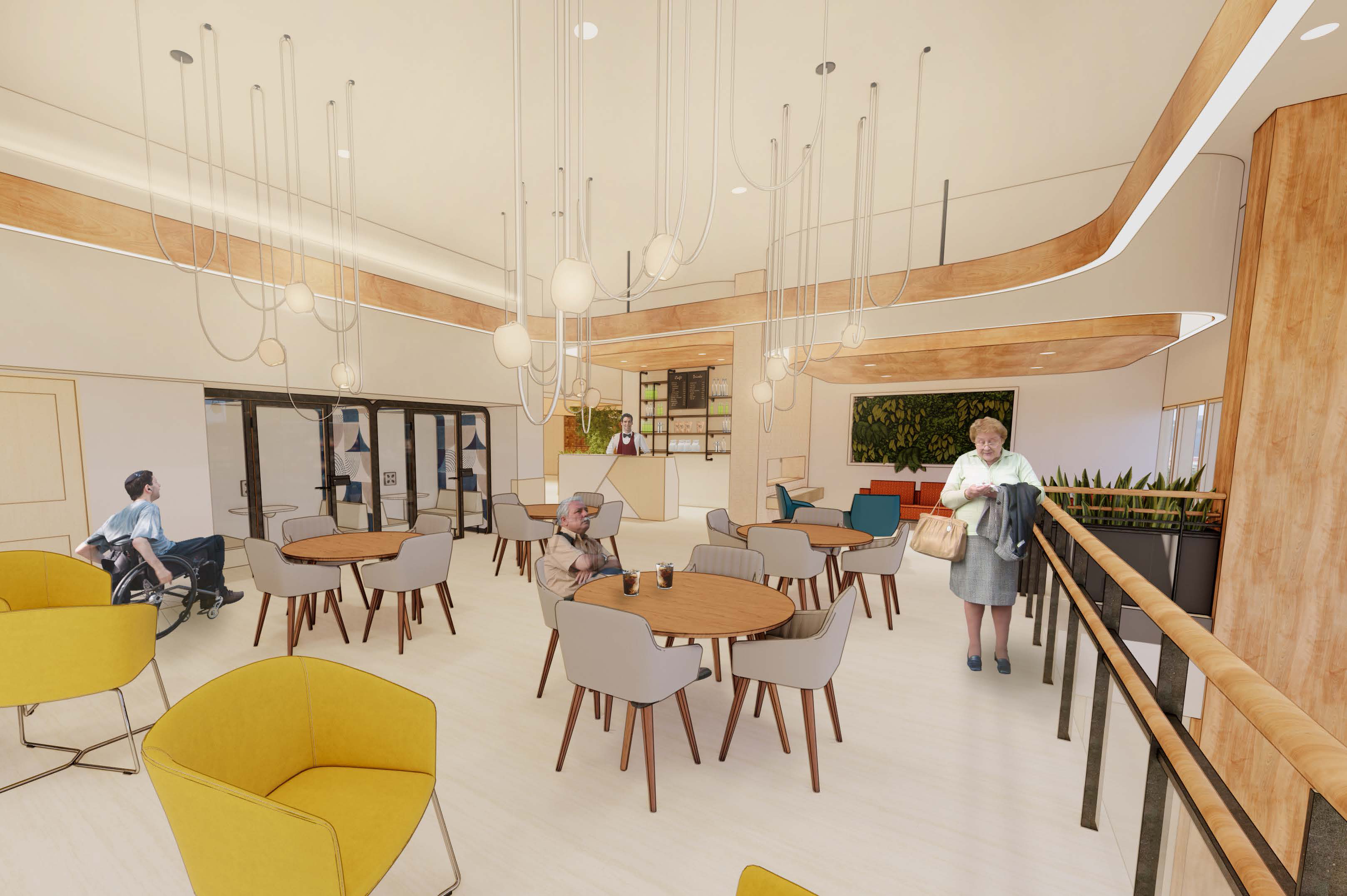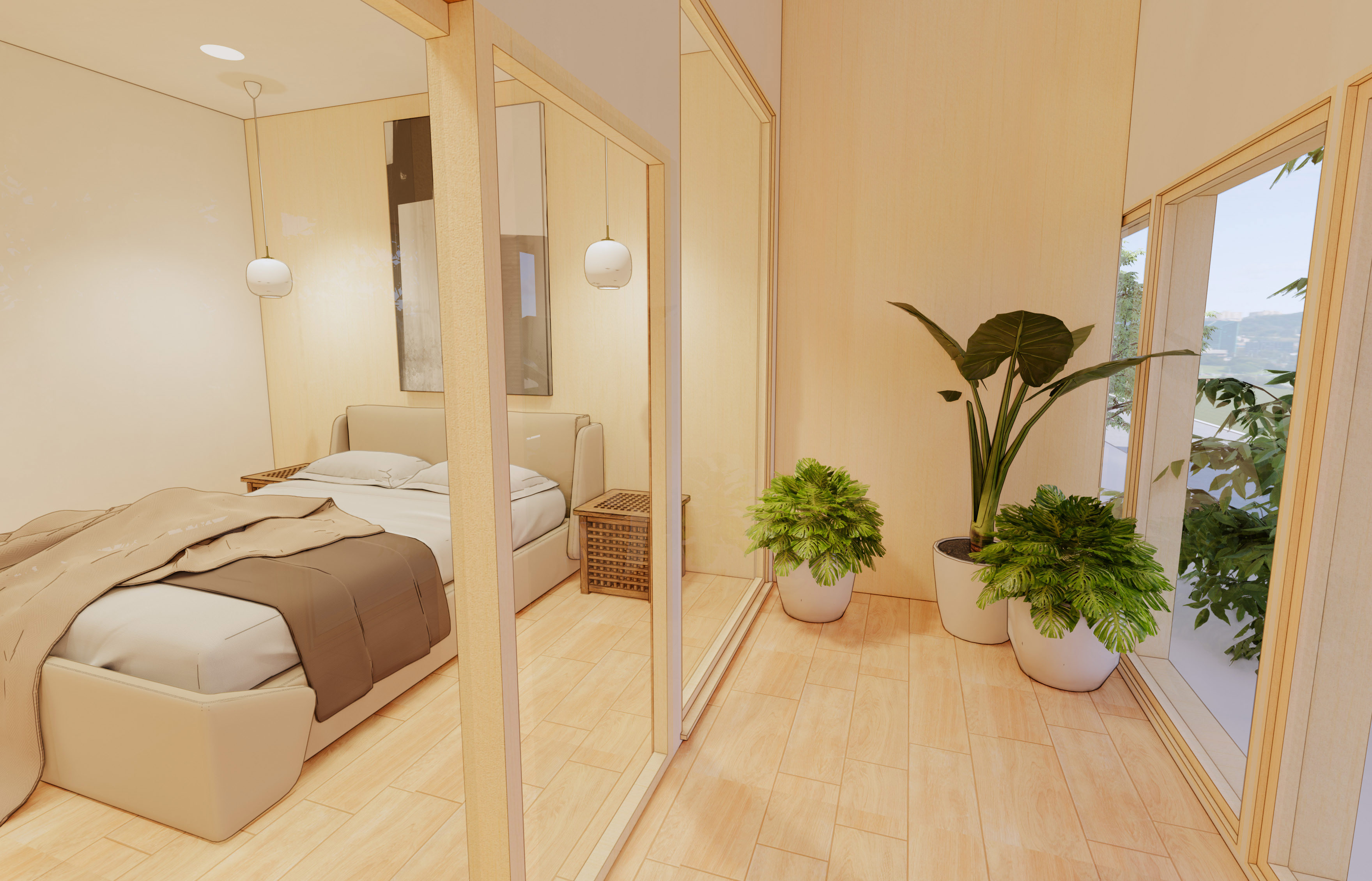Continuing Care Retirement Communities
Interior Architecture
Caitlyn Barry | Graduation Year: 2022
https://www.linkedin.com/in/caitlyn-barry-37231a179/
- Executed: 5th Year
- Degree Path: Interior Architecture & Product Design
- Course: Advanced IA Design Studio
By the year 2050, the United States elderly population is expected to reach over 81 million with an increased dependency ratio of 72 dependents per 100 working age adults (Passel, 2008). As of 2010, about 6.5% (2.5 million) of older adults (65+ years old) in the United States lived in care facilities (Pray, Boon, Miller, Pilsbury, and Rapporteurs, 2010), this number is expected to rise with the growing older population. These older adults require facilities to house and care for them as their medical, physical, and mental care needs increase. Continuing Care Retirement Communities (CCRC) typically include varying levels of care in a campus-style setting and accommodate for independent, assisted, and skilled nursing care living (Shippee, 2010). Most care facilities are successful at meeting the basic human needs of physical nourishment, shelter, protection, and medical care; but secondary needs like social engagement, wellbeing, and life satisfaction are easily forgotten (Shippee, 2010). With an increasing population, quality of care in these facilities is expected to be strained and design solutions are needed to use care space more efficiently while improving quality of care.
Following an extensive literature review, a case study analysis was completed for one chosen facility. Due to the contagious nature of the novel coronavirus, in-person data collection was not feasible, so qualitative observations were conducted virtually, through video tours, photographs,
and social media postings. The data was analyzed via visual methods, and spaces were categorized in three main groups: social spaces, private spaces, and transition spaces. Informed by the conclusions drawn from the literature review, these three areas were then evaluated on the following criteria: seating and arrangement, size and space planning, lighting, color, and materials and finishes. Results of the case study and literature review were summarized into actionable design solutions and applied to the proposed project: a CCRC that focuses on wellness, socialization, and life satisfaction.
Therefore, this evidence-based design proposes a CCRC model that serves as a precedent for existing and new facilities that aims for the promotion of a holistically healthier aging in place.


